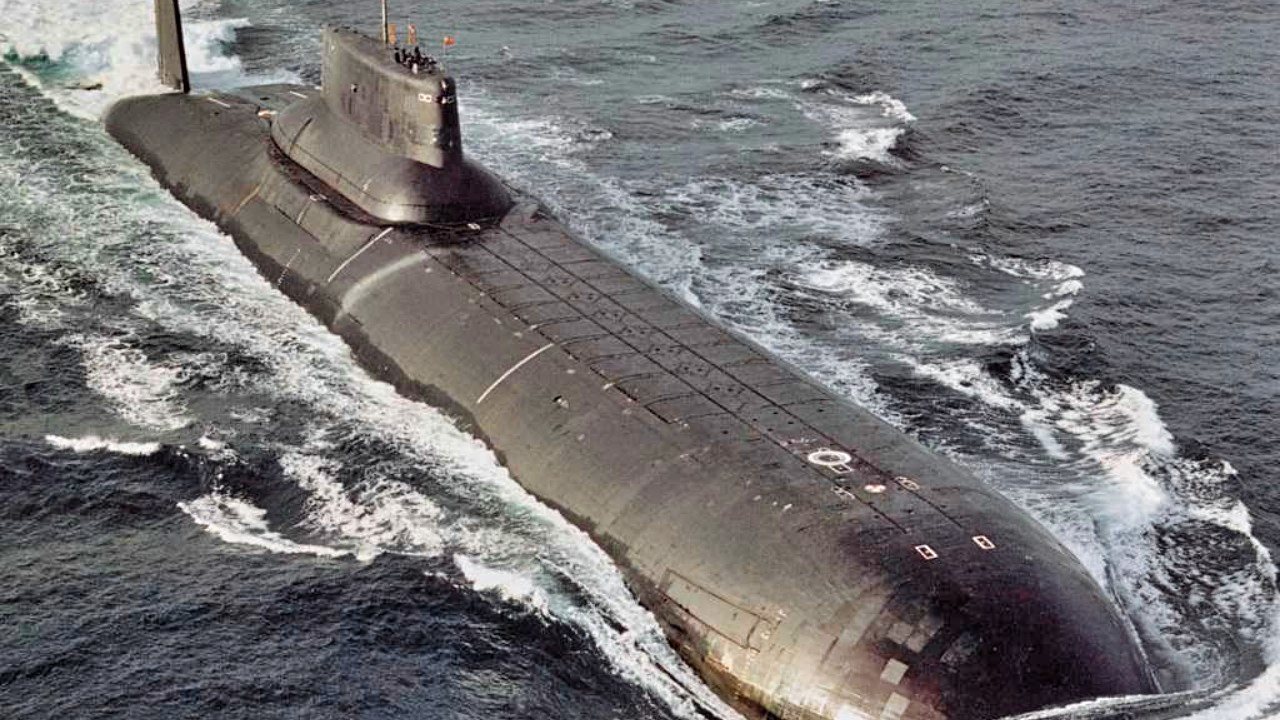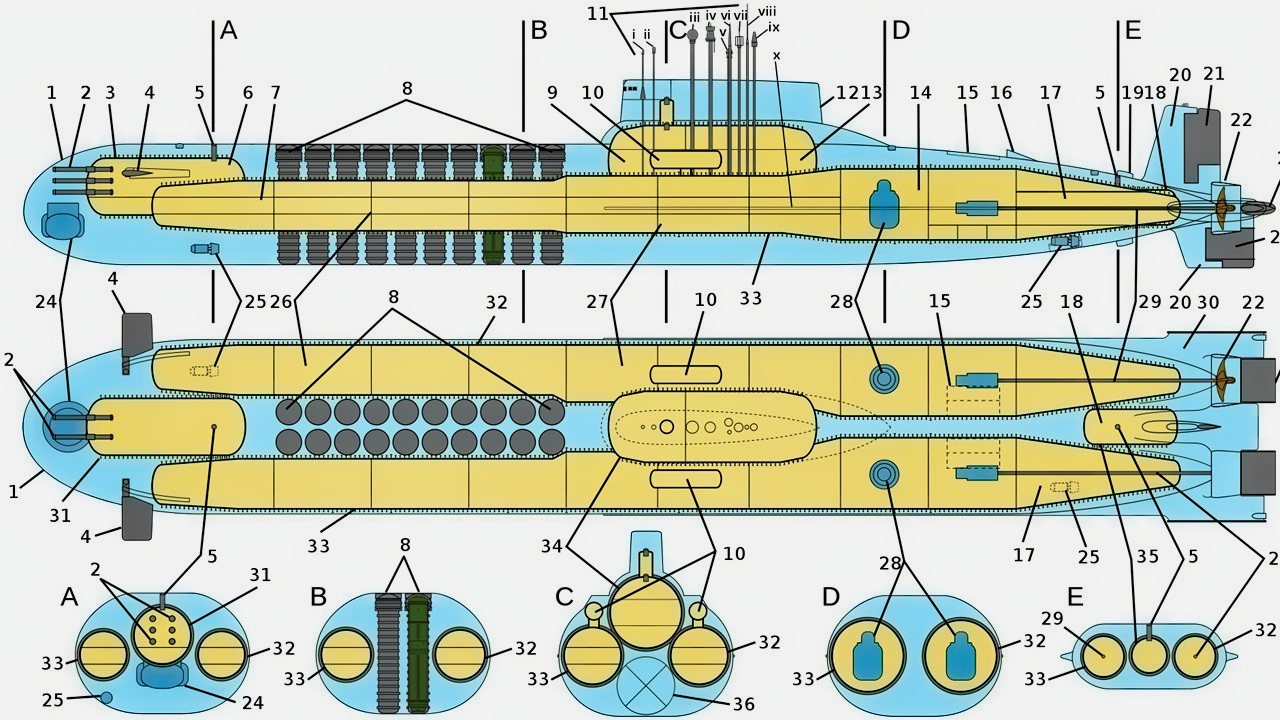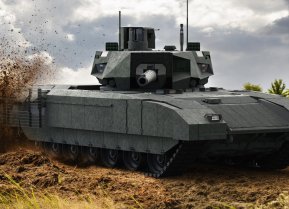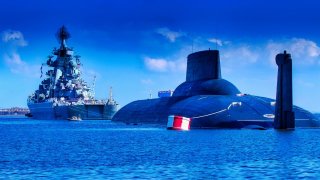Russia's Typhoon-Class Submarine: Something the U.S. Navy Can't Match?
Retired last year after forty years of service, the Soviet/Russian Typhoon-class submarine was a behemoth still holding the world record for the largest submarine ever built.
Retired last year after forty years of service, the Soviet/Russian Typhoon-class submarine was a behemoth that still holds the world record for the largest submarine ever built.
With a displacement of 48,000 tons, and the ability to accommodate a crew of 160, the Typhoon is likely to hold onto its size record for the foreseeable future.
Typhoon-Class: The biggest submarine ever
The Typhoon was the largest submarine ever built. Not only was the displacement huge, but the dimensions, too. End to end, the Typhoon measured 574 feet – about half the length of a modern supercarrier – with a 75 foot beam and a 39 foot draught.
To propel the massive submarine forward, the Typhoon relied upon two OK-650 pressurized-water nuclear reactors, two geared steam turbines, which produced 50,000 horsepower each, and two shafts powering 7-bladed shrouded screws. The power plant is good enough to propel the Typhoon forward at 22 knots, or 25 miles per hour, when surfaced, and 27 knots, or 31 miles per hour, when submerged. Not bad for a ship that displaces nearly 100,000 pounds.
The Typhoon’s nuclear reactors allowed the submarine to stay submerged for 120 days or more at a time. When submerged, the Typhoon was tested for depths down to 1,300 feet.
The Typhoon was designed with multiple pressure hulls, a layout that simplified the internal design while making the submarine much wider than most submarines (hence the world-class displacement). The benefit of the multi pressure hull scheme was of course safety – if one pressure hull is breached the crew members in others pressure hulls would be safe, theoretically, with flooding more likely to be compartmentalized.
Armed to the teeth
The Soviets did not design the Typhoon to be the world’s biggest submarine for the sake of being big. Rather, the Soviets designed the Typhoon to be big so that she could heft substantial amounts of armament throughout the world’s oceans.
The Typhoon was loaded with six torpedo tubes, designed to handle the RPK-2 (SS-N-15) missiles or Type 53 torpedoes. But the Typhoon’s primary weapons system was the twenty R-39 (SS-N-20) ballistic missiles (SLBM), each of which could carry ten MIRV nuclear warheads.
The history of the Typhoon-Class
The Soviets developed the Typhoon with one very specific objective in mind: matching the SLBM armament of America’s then-new Ohio-class submarine. The Ohio, with the ability to carry 192 nuclear warheads (100 kilotons each), concerned the Soviets who dreaded falling behind in the MAD-inspired arms race.

In all, six Typhoons were built, all between 1976 and 1985. A seventh Typhoon, the TK-210 was laid down but never finished, eventually being scrapped for parts. The history of the remaining Typhoons is not perfectly clear to outsiders. Typhoons TK-12, TK-13, TK-17, and TK-20 have all been decommissioned – but the exact dates of the decommissioning are unclear. The TK-202 was decommissioned in 1999 and then scrapped with the financial support of the United States who was eager to see Russia’s military dwindle in size.
The last remaining Typhoon, coincidentally the first Typhoon, the Dmitriy Donskoy or TK-208, was finally decommissioned last year, 42 years after entering service in 1981. And while the Typhoon is no longer an active class of submarine, her dimensions are unlikely to be rivaled in the near future.

About the Author: Harrison Kass
Harrison Kass is a defense and national security writer with over 1,000 total pieces on issues involving global affairs. An attorney, pilot, guitarist, and minor pro hockey player, Harrison joined the US Air Force as a Pilot Trainee but was medically discharged. Harrison holds a BA from Lake Forest College, a JD from the University of Oregon, and an MA from New York University. Harrison listens to Dokken.
Image Credit: Shutterstock.


